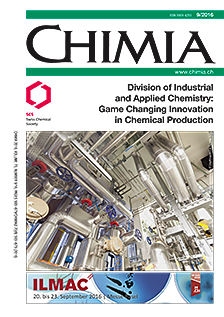Quantitative Assessment of Mass Flow Boundaries in Continuous Twin-screw Granulation
DOI:
https://doi.org/10.2533/chimia.2016.604Keywords:
Continuous processing, Granule size distribution, Mass flow variation, Process optimisation, Wet granulationAbstract
In pharmaceutical manufacturing, there is an increasing interest in continuous manufacturing. As an example for fast continuous processes in general of considerable complexity, this study was focussed on improving the understanding of twin-screw wet granulation. The impact of the liquid-to-solid (L/S) mass flow ratio on product quality (granules) as well as on downstream process operations (tableting) was investigated in detail. Initially two methods were used to define L/S ratio boundaries for the granulation regime in twin-screw wet granulation. It was shown that the first method, which is based on measuring the wet granule mass flow variation, can be used to define the upper L/S ratio boundary of the granulation regime. The second method, based on measuring the granule size distribution, can be used to define the lower L/S ratio boundary of the regime. Using these methods, the granulation regime for different formulations could be established. This information was then used to show that the formulation could be optimised such that the process is more robust (i.e. wider L/S ratio boundaries for the granulation regime). Also it could be used to optimise the formulation considering further downstream processing such as drying (using as little water as possible to reduce drying efforts) or tableting (obtain granules with optimised tableting properties). Preferably, the process should be performed close to the lower L/S ratio boundary of the granulation regime. In summary, these tools enabled the quantitative establishment of granulation regime boundaries in a twin-screw wet granulation process and can be used to optimise formulation and to create a robust process. Analogies to other continuous processes in completely different applications can be conceived.Downloads
Published
2016-09-14
Issue
Section
Scientific Articles
License
Copyright (c) 2016 Swiss Chemical Society

This work is licensed under a Creative Commons Attribution-NonCommercial 4.0 International License.
How to Cite
[1]
A. Schmidt, H. de Waard, K.-P. Moll, M. Krumme, P. Kleinebudde, Chimia 2016, 70, 604, DOI: 10.2533/chimia.2016.604.







